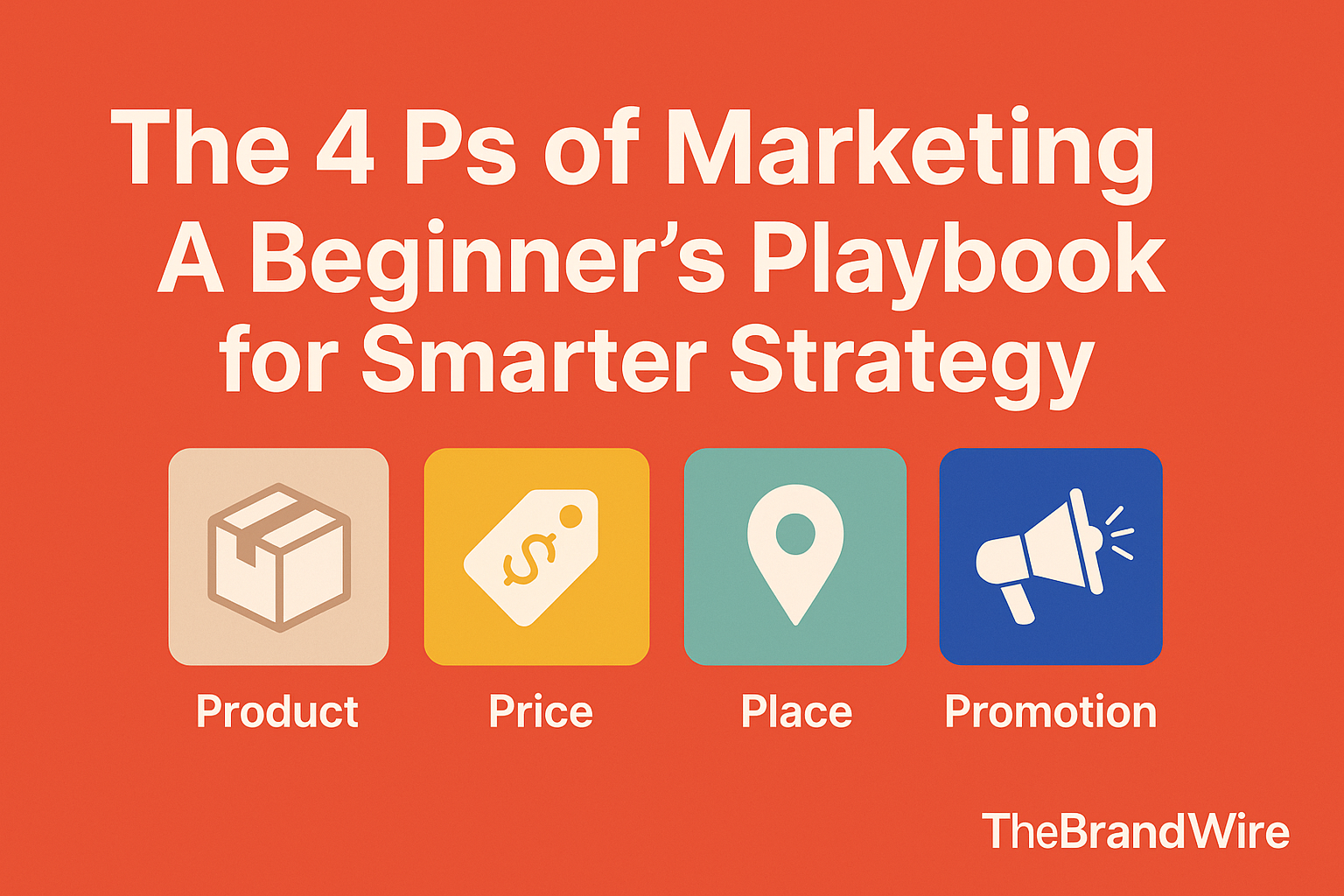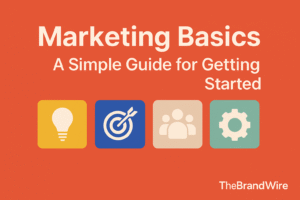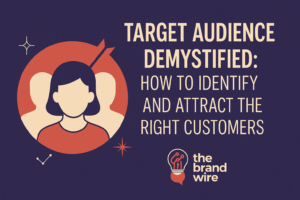Introduction
Marketing can feel overwhelming when you’re just getting started. With social media trends changing daily and new tools popping up every week, it’s easy to lose sight of what truly matters. But no matter how much the industry evolves, the core of marketing remains the same.
Enter the 4 Ps of Marketing — Product, Price, Place, and Promotion. These four elements are the backbone of any effective marketing strategy, whether you’re building a global brand or starting your first side hustle.
At TheBrandWire, we’re passionate about breaking down complex marketing concepts into clear, beginner-friendly playbooks. So let’s dive into the 4 Ps and how you can use them to attract, engage, and convert your audience.
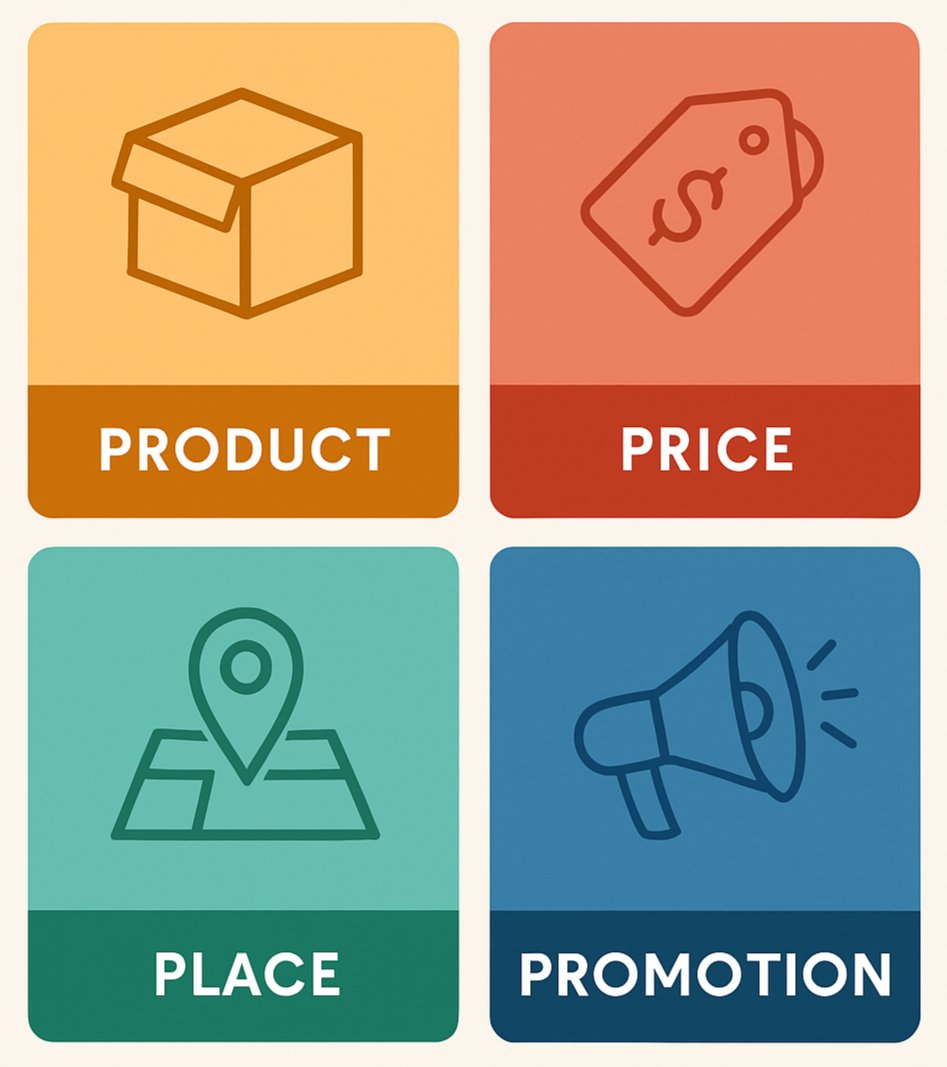
1️⃣ Product – Define What You’re Really Selling
Your product is more than what’s on the shelf or listed on your website. It’s the full experience you deliver to your customer — the benefits, the packaging, the quality, the brand promise.
Whether you’re selling a physical item, a service, or a digital product, your goal is to make sure it solves a real problem or fulfills a strong desire.
Here are some questions to help refine your product:
– What need does it fulfill?
– Who is it designed for?
– What makes it better or different from alternatives?
– How does it fit into your customer’s daily life?
🧠 Example: Selling handmade candles? You’re not just offering wax and scent — you’re offering relaxation, mood-setting, and a touch of aesthetic warmth. That’s your real product.
2️⃣ Price – Set a Value That Reflects Your Brand
Price is more than a number — it’s a message. It tells your customers how much you value your product and how they should perceive it. A low price can make your offering feel budget-friendly, while a higher price might convey exclusivity.
There are several pricing strategies to consider:
– **Cost-plus pricing**: Add a markup to your production cost
– **Value-based pricing**: Charge based on perceived value
– **Competitive pricing**: Match or beat your rivals
– **Psychological pricing**: Use prices like ₹999 instead of ₹1000 to appear more affordable
💡 Pro Tip: Pricing isn’t set in stone. Test different price points, offer discounts strategically, and consider bundles or subscription options to increase perceived value.
3️⃣ Place – Make It Easy to Find You
Where your product is available directly affects how easily your audience can access and buy it. This is the ‘Place’ element — your distribution strategy.
You need to consider both physical and digital spaces:
– Online stores (Shopify, WooCommerce, Etsy)
– Physical retail (your own store, markets, partner shops)
– Marketplaces (Amazon, Flipkart, Meesho)
– Direct sales (WhatsApp, DMs, email orders)
📍 Example: A fashion brand targeting Gen Z might find more success through Instagram Shops and influencer DMs than a traditional website.
4️⃣ Promotion – Share Your Story, Strategically
Even the best product won’t sell if nobody knows about it. Promotion is how you attract attention, generate interest, and convince people to take action.
Your promotion mix can include:
– Social media content (posts, reels, stories)
– Paid advertising (Google Ads, Meta Ads)
– SEO and blogging
– Email campaigns and newsletters
– Public relations or influencer shoutouts
📢 Example: Think about how brands like Zomato or Dunzo use humor and timing to promote. It’s not just about selling — it’s about becoming memorable.
🧠 Pro Tip: Your message should adapt to your platform. A reel on Instagram should feel different from an email newsletter.
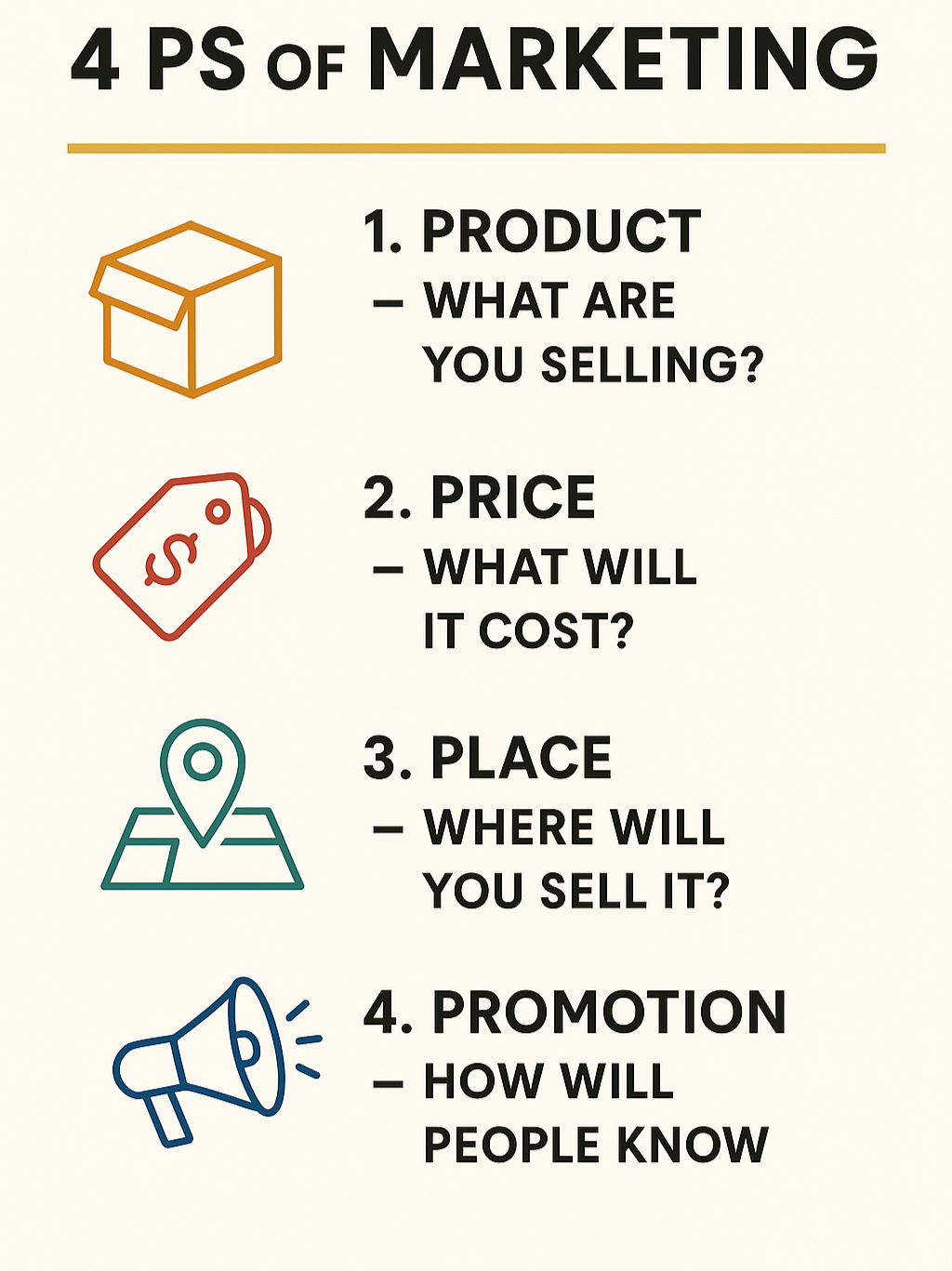
🔄 Why the 4 Ps Still Matter in 2025
As AI and automation take over more parts of marketing, these 4 fundamentals keep your strategy grounded. They ensure that every piece of your marketing — from your product landing page to your Instagram ad — aligns with a core purpose.
✅ Product: Centered on the customer’s need
✅ Price: Aligned with value and brand position
✅ Place: Accessible through the right channels
✅ Promotion: Thoughtful, consistent, and creative
Stick to the 4 Ps, and you’ll always have a strong foundation to build on — no matter the trends.
📬 Ready to Build Your Own Marketing Strategy?
You don’t need a degree to market like a pro. Just solid fundamentals, creativity, and a willingness to experiment.
Follow TheBrandWire for weekly breakdowns, beginner guides, and digital marketing playbooks — built just for you.


